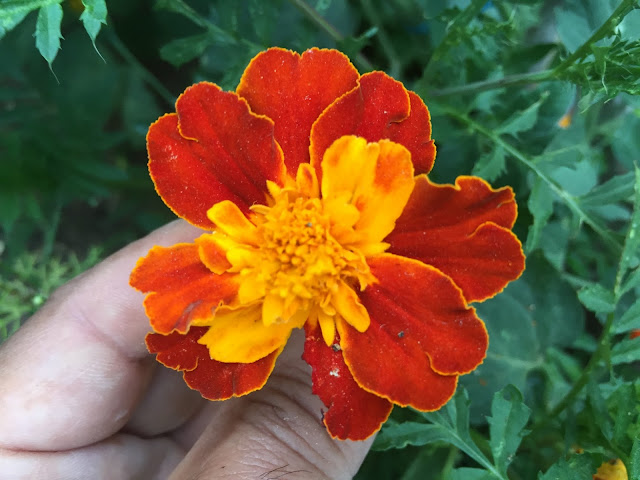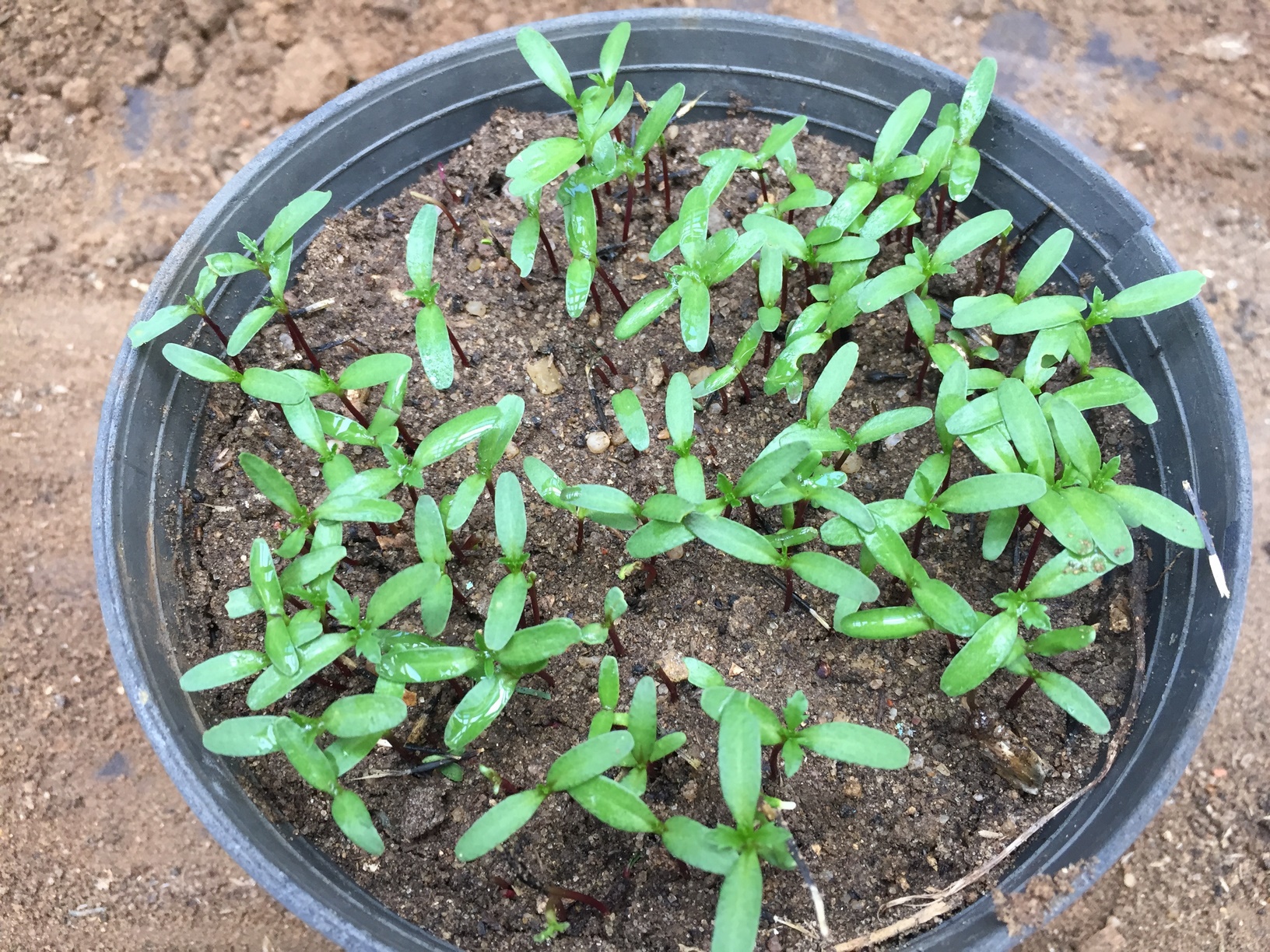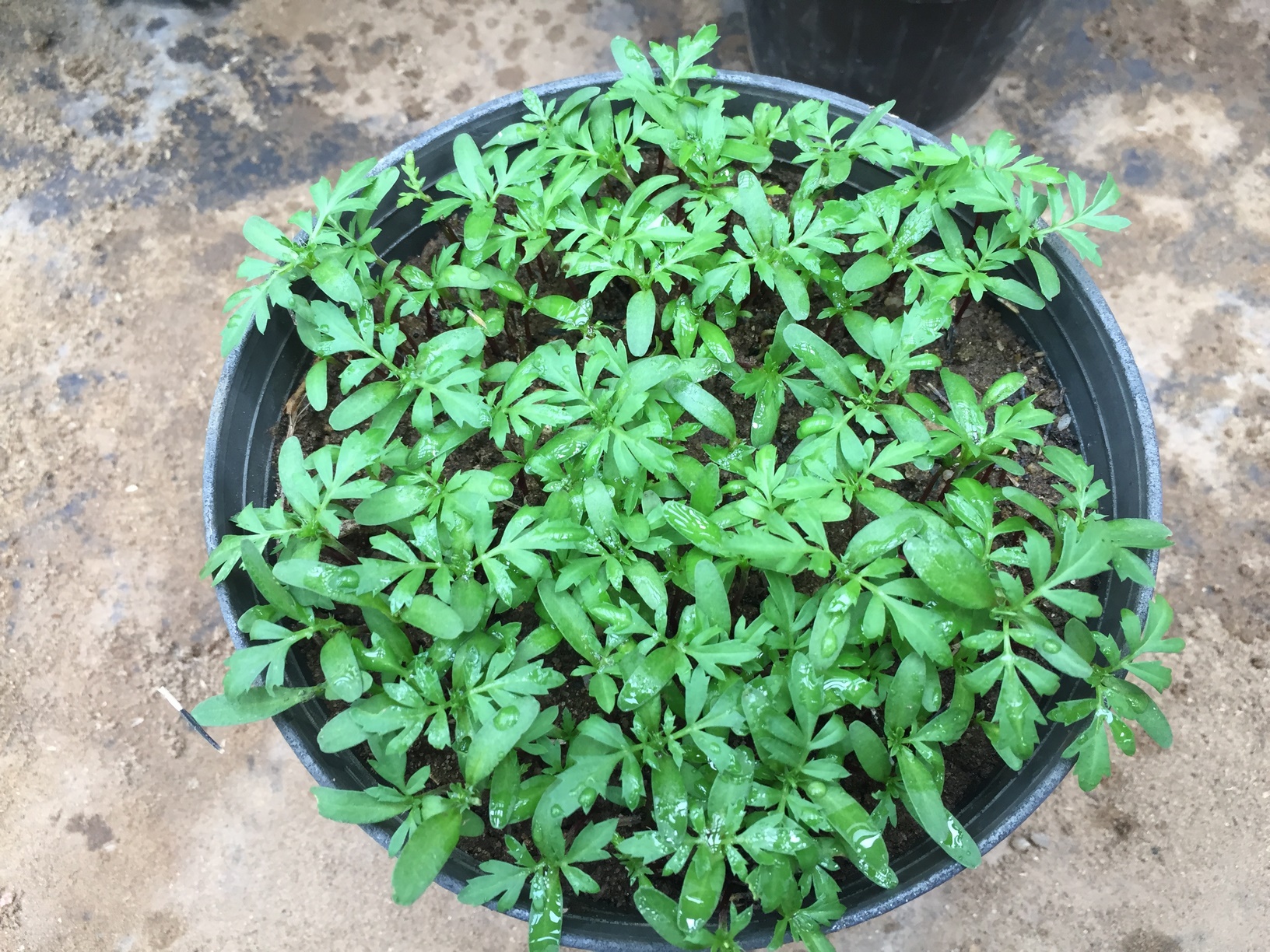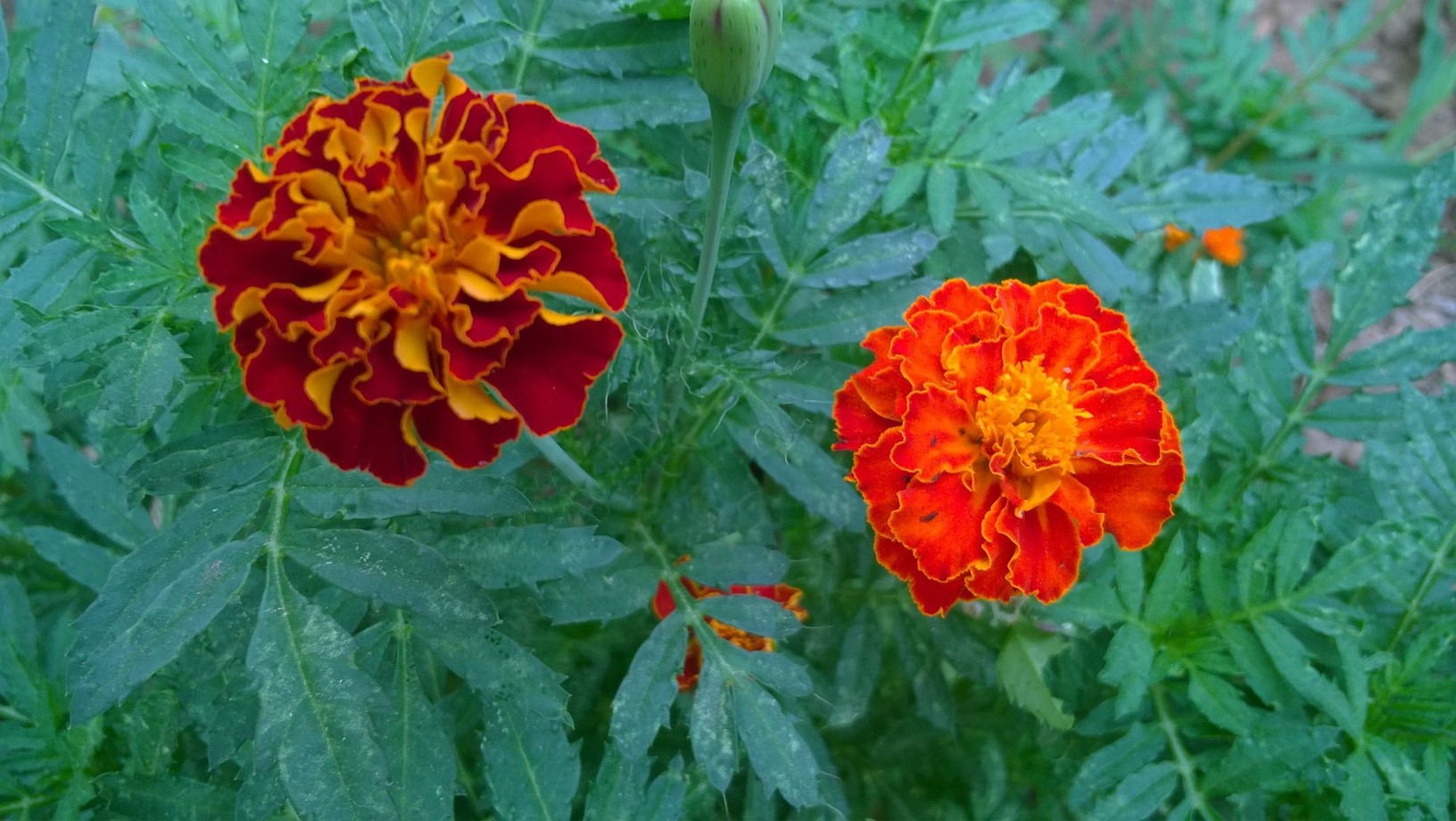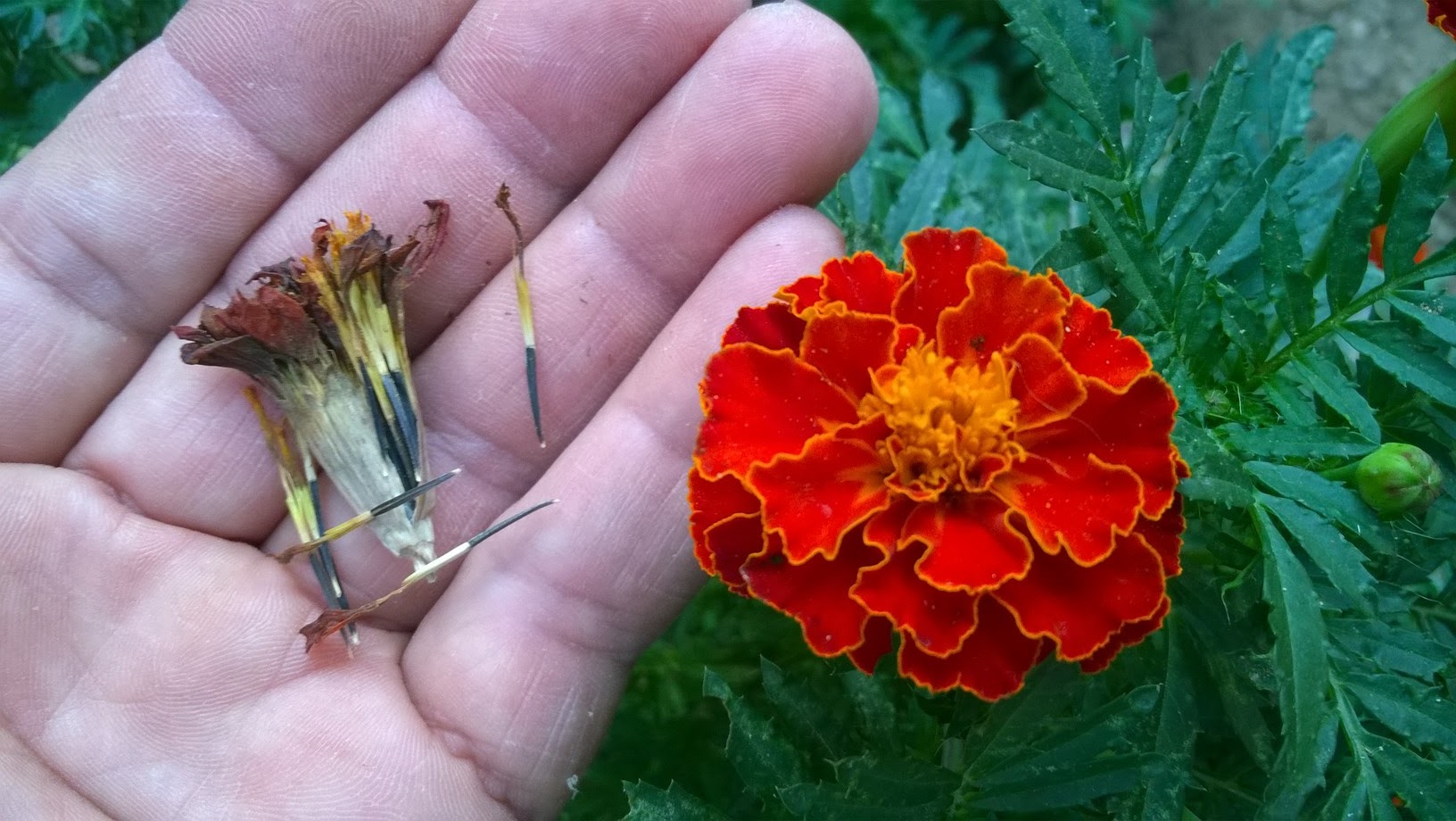Table of contents
.History of marigolds
Marigolds "Tagetes erecta", commonly called African marigold, Aztec marigold, American marigold , is native to Mexico and Central America. The earliest use of marigolds was by the Aztec people who attributed magical, religious and medicinal properties to marigolds. The first recorded use of marigolds is in the De La Crus-Badiano Aztec Herbal of 1552. Marigold seeds were taken from the Aztecs by early Spanish explorers to Spain. The marigolds were cultivated in Spain, the flowers became popular in the churches in Spain and were frequently referred to as "Mary's Gold." The name evolved to marigold. From Spain, marigold seeds were transported to France and northern Africa. Several hundred years after their initial journey from the Americas to Europe and Africa, marigolds were introduced to American gardeners. Today, marigold varieties are heavily scented or odor free, tall or short, and available in hues of yellow, orange and red. The many uses of marigold flowers throughout time weave an interesting history of marigolds and their importance in our lives, past and present.
.Plant description
Marigolds, Members of the genus Tagetes have attractive yellow, orange, or red flowers that are solitary or clustered. Blooms naturally occur in golden, orange, and yellow colors, often with maroon highlights. Floral heads are typically from "1 to 4–6 cm" diameter, generally with both ray florets and disc florets. Each flower consists of large number of petals that overlap. Biggest petals are located on a periphery and smallest in a center of a flower. Flowers contain both male and female reproductive organs. Most species have pinnate green leaves, leaves opposite each other on the stem that usually are finely cut, and bracts (leaflike structures) that form a cup-shaped base below each flower head. The roots of marigold produce secretions that contain flavonoids, amines, amides, phenols and ketones that have insecticidal and nematicidal effects.
Many varieties of marigolds can help repel root-knot nematodes, microscopic worms that live in the soil and can damage vegetable and fruit plants. Marigolds produces flowers all year round under optimal weather conditions. Majority of marigold species bloom during the summer and fall. While some marigold species are perennials, most of the common types are annuals that die with the first frost.
Marigolds has edible flowers. They are often used as an ingredient of salads and for decoration of desserts. Medical studies showed that marigolds contains substances with anti-viral, anti-bacterial, anti-fungal and anti-inflammatory properties.
Here is everything you need to know to grow marigolds
Before growing marigolds, decide which type you want to grow. Marigolds come in a wide range of sizes, from miniatures to giant varieties that can grow up to four feet tall! Select the color and size that is perfect for your flower garden. There are four main groups of marigold species, and each of them produce variations in color and size.
. African marigolds "Tagetes erecta"
Come in two basic varieties: “large-flowered” and “tall.” Large-flowered are fairly short, at between 12-14” tall, and they have very large blossoms (up to 3.5” inches in diameter). Tall African marigolds have small flowers but can grow up to 3’ tall.
Come in two basic varieties: “large-flowered” and “dwarf.” Large-flowered are between 12-16” tall with large (up to 2”) flower blossoms. Dwarf French marigolds rarely grow higher than 12” and produce small flowers.
. Triploid marigolds
Are a hybrid of French and African marigolds and are also known as “mule” marigolds because they cannot reproduce. They grow fairly tall and produce large (up to 2”) flowers.
. Single marigolds "Tagetes tenuifolia"
They are quite different in appearance from other marigold varieties because their flowers have very simple, almost daisy-like flowers rather than the thick and bushy blossoms .
. Starting marigold seeds indoors .
In order for your marigolds to be ready for planting outdoors in the spring, you will need to start growing marigolds from seed indoors about 50 to 60 days before the last frost date. With some simple indoor steps, you can have your marigolds well on their way to impressive outdoor blooms.
. Fill a plastic pot with moist seed starter. Mix the seed starter with a little water in large bowl to moisten it before filling pot this makes it much easier to work with. Dry seed starter does not absorb moisture well and makes watering the seeds difficult.
. Plant marigold seeds to a depth of ¼ inch and cover them with soil. Water them well to moisten the seeds.
. Cover the pot with clear plastic wrap and place it in a warm location to germinate the seeds.
. Keep the soil moist, but avoid soggy soil. It the soil becomes soaked, or shows signs of mold, partially open the plastic to allow moisture to escape and air to circulate.
. Remove the plastic once seedlings emerge and move them to an area with bright, indirect light.
. Check marigold seeds daily for germination. Typically, marigolds will take three to four days to germinate, but may take a few days longer if the location is cooler.
. Marigolds germinate quickly, grow rapidly and blooms should appear within a few weeks of sowing.
Watch how to start marigolds from seeds indoors video
How to transplant marigold seedlings indoors
Transplanting marigold seedlings in single pots indoors is not particularly difficult. With some simple indoor steps, you can have your marigolds seedlings well on their way to impressive outdoor blooms.
Watch how to transplant marigold seedlings indoors video
. Harden off marigolds seedlings before transplanting outdoors by gradually exposing them to more sun each day.
. Planting marigold seedlings
Marigolds are not fussy and will tolerate most conditions. However, with rich, well-drained soil and plenty of sunshine, these plants will thrive. Organic compost or well-aged manure mixed into the soil garden prior to planting will greatly improve the health of the plants. Plant the marigold seedlings to the original planting depth. Dwarf varieties can be spaced 6 to 8 inches apart, while tall varieties require 12 inches between plants. Fill in around the roots with soil. Firm the soil down with your hands to secure the plant and to remove air in the soil. Water the seedlings thoroughly to moisten the soil to the root level.
. Marigolds care
. You should prune the plant to encourage growth, this does not mean trimming the plant in any way, you will most likely only need to pinch the dead bloom from the stem. Dead head spent blooms to encourage the plant to produce more flowers. With regular deadheading marigolds continue to bloom until frost.
. Add a layer of mulch between plants to suppress weeds and keep soil moist, especially when plants are young.
. Direct sowing marigold seeds
Sow marigold seed directly in the ground and cover with a thin layer of soil (about 1/8 inch deep). Water thoroughly. Marigolds sprout within days in warm weather and plants bloom in about 8 weeks. Thin to 8-18 inches apart after seedlings have sprouted
. Growing marigolds in containers
Marigolds can easily grow in containers, but it is so important to know that some varieties grow quite tall, which will make growing in a container more difficult. They will need plenty of sun and water, Container plants require more frequent watering and some may require daily watering depending on the size of the container. The main things to remember when planting a marigold in a container is that they need air to grow, so they cannot be planted close together. In fact, you should limit a six-inch pot to one plant. In addition, the plant should have at least six hours of sun a day.
. Collecting seeds
. Wait for your marigold flower heads to begin turning brown.
. When the flower head begins to die off and is mostly dry and brown, grasp the flower head "the petals only", and gently pull it away from the plant.
. At the end of the flower head, you should see a cluster of seeds. Separate these seeds from the petals and spread out on a paper to dry in the sun for a couple of weeks. Don't leave the seeds attached to the petals as the rotted petals will rot the seeds!
. When your seeds are completely dry, store them in an envelopes in a dry place until next growing season.
Remember when growing marigolds from seeds you collected yourself is that your marigolds may look different than the parent plant from which the seeds were taken. This is because many marigolds are actually "hybrids" - making their seeds different from the parent plant!
Watch how to collect marigold seeds video
. What to plant with marigolds
There are a number of vegetable plants that can benefit from the addition of marigolds in the garden. Marigold companion planting enhances the growth of basil, cabbage, cucumbers, eggplant, potatoes, squash and tomatoes.
Marigolds are a great source of nectar, which means that it will attract butterflies and honeybees to your garden.
The most common is to attract bees and other useful insects to your garden is to plant flowers with your vegetables.
With it's bright orange flowers, marigold add a splash of color to your garden. But, those lovely marigold flowers can also provide a natural pest deterrent as well as strength to other plants such tomato plants.
. Marigolds common problems
Occasionally marigolds will get a fungal infection if conditions are too wet. To prevent fungal issues, avoid getting water on the marigolds’ leaves, keep weeds down, and plant in well-drained soil. Marigolds can get a powdery mildew on their leaves. This is because the plants are not getting enough airflow, so to prevent this problem, you can simply create more space between the plants. Be careful not to over water the plants because root rot can form, and make sure to water the plants at the base so that crown rot does not form on the blooms.
Watch how to grow and take care of marigolds plants
There’s a reason why gardeners have been growing these flowers for a very long time. Simply it's because, they take off easily from seed, either grown indoors during the winter months or sown directly into the soil when it’s warmer out and so easy to grow and care of. Better yet, marigolds offers many benefits for your garden. From deterring pests to attracting pollinators and desirable insects, and improving the soil quality. Marigolds are not fussy and tolerate a wide range of soil and climate conditions, but most of all, they love heat. That's why marigolds should take the first place into your garden every year.
Now that you know how to grow Marigolds , you can grow these wonderful flowers in your garden it's so easy. If you have any tips for growing Marigolds, we'd love to hear them - please share them in the comments below.
You might also like to read:
How to Grow and Take Care of Marigolds Plants
How to Start Marigolds from Seeds
How to Collect Marigold Seeds
How to Start Marigolds from Seeds
How to Collect Marigold Seeds
This web site is a participant in the Amazon Services LLC Associates Program, an affiliate advertising program designed to provide a means for sites to earn advertising fees by advertising and linking to amazon. Some of the links to products on this site are affiliate links. These are products that I've used or recommend based from homesteading experience. I do make a small commission (at no extra cost to you) from these sales.(alert-warning)







